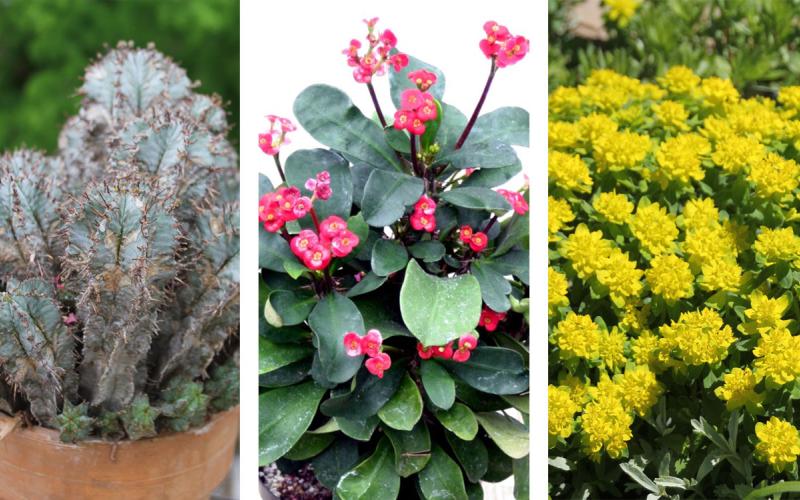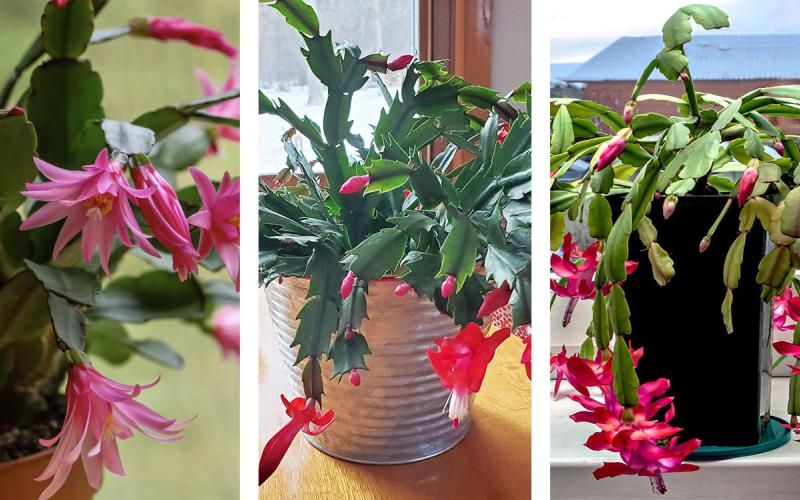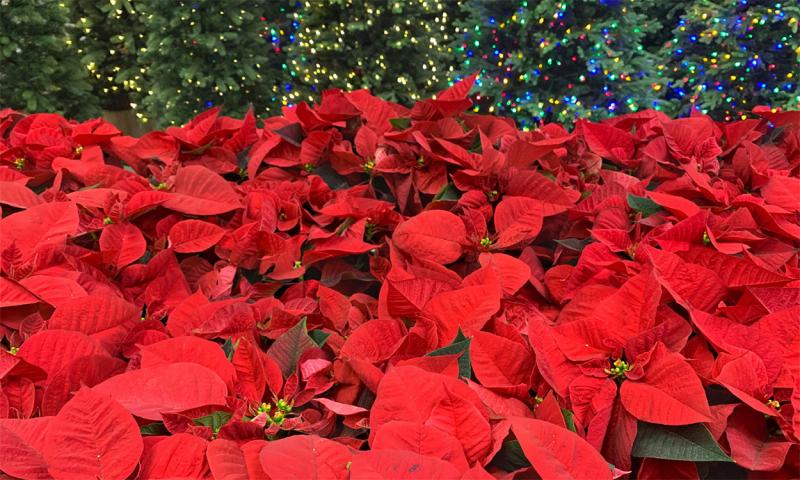
Written by Cindy Schnabel, South Dakota State University (SDSU) Extension Horticulture Assistant and Master Gardener, under the direction and review of Kristine Lang, SDSU Assistant Professor and Consumer Horticulture Extension Specialist.
With the holiday season well underway, garden centers, floral shops and popular retail chains are full of poinsettias. The poinsettia, a native of Mexico and Central America, is the most-popular potted plant in the United States. Most poinsettias are sold within the six weeks leading up to Christmas, representing approximately $60 million in sales each year.
This favorite holiday plant has bright, leaf-like structures that are called bracts. Bracts often get mistaken as flower petals. The true flower of the poinsettia is the very small cluster of yellow petals at the center of the bracts. The bracts range in color from creamy whites, oranges and many shades of red. Whatever your color scheme is, you will be able to find a poinsettia to complement any décor, as there are over 100 varieties of poinsettias available.
Buying a Healthy Poinsettia
Seeing all those plants arriving in the store makes it hard to resist purchasing one. Ideally, you want the plant to last throughout the holiday season. Below are a few things to look for when selecting the perfect poinsettia to bring home with you.

- Check the potting soil moisture.
The plant should not be so dry that it is wilting or so wet that the soil is saturated, the pot is very heavy and the plant is rotting. The easiest way to determine this in the store is by examining the plant and lifting the pot to see if it’s very light or overly heavy. - Look for new or early blooms.
You can do this easily by looking at the flowers. Remember that the flowers are the very-small clusters of yellow petals at the center of the colorful bracts. New, fresh flowers will have bright-yellow petals and pollen. If the yellow flower petals are starting to brown and fall off your display of color may be shortened. - Look at the leaves.
A healthy plant will have dark, green leaves with even coloration. If the plant is yellowing, leaves are browning or there are brown edges on them, this is a sign that the plant is stressed due to improper watering, disease or other factors. Do not bring this one home. - Check for insect pests.
Thoroughly inspect the plant. Insect pests, such as aphids, whiteflies and fungus gnats could be present. Look at the soil and under the leaves and bracts of the plants. Insects may be found clinging to leaves, crawling around in the soil or flying around the plant. It is best to avoid bringing these plants home, especially if you already have other houseplants in the home. - Look at the display.
Plants that are packed together on display may have damaged leaves or bracts that will not look as pleasing or last as long.
Transporting Your Poinsettia Home
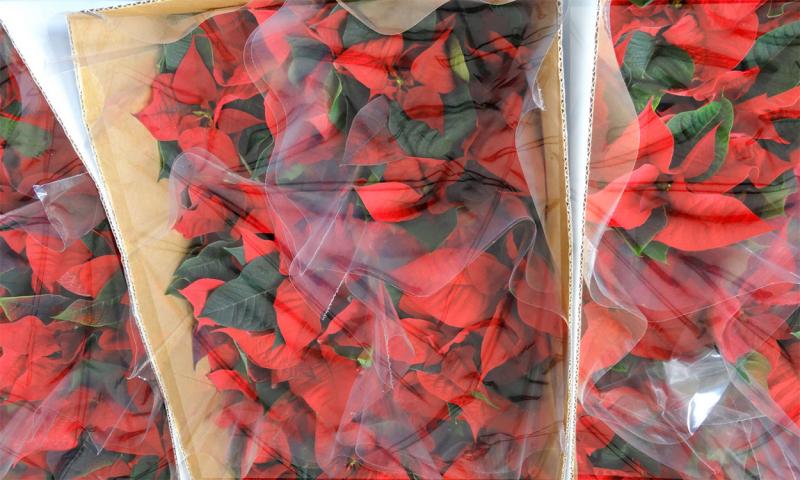
Once you have completely inspected the plant, take steps to get it home safely. Poinsettias do not tolerate cold or freezing temperatures. Before leaving the garden center, nursery or big-box store, wrap plastic or paper around the plant before taking it outside. Most stores should do this for you, but, if not, make sure to ask that they do. If the outside temperature is below freezing, do not leave your poinsettia in the car and continue to shop. Take your plant home right away. Poinsettias that experience extreme temperature swings during transport may show subtle signs of shock as they acclimate to your home conditions, and you may notice a few leaves or bracts dropping from the plant. This can be avoided by ensuring your plant is properly insulated against the cold and transported home quickly.
Caring for Your Poinsettia at Home
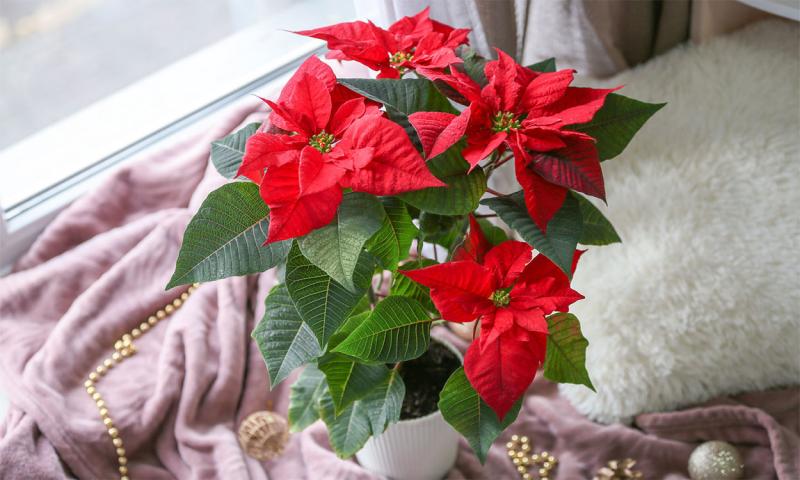
Once at home, the poinsettia needs bright light. Place it by a well-lit window; south would be ideal to capture as much of our limited winter daylight as possible when the sun is low in the sky.
Make sure that no part of the plant touches cold windowpanes. Temperatures below 50 degrees will cause damage to the poinsettia. If there are any drafts near your window, it would be better to set your poinsettia near, but not next to, the window instead. Home temperatures near 70 degrees Fahrenheit are ideal for prolonging the life of your poinsettia. Plants that are next to a warm draft from a heat register may decline more quickly than if they were placed elsewhere.
Keep the poinsettia plant moist. Water it whenever the soil feels dry, or the leaves show signs of wilting. The key is to thoroughly water the plant until it drains out the bottom. Come back 10 to 15 minutes later and dump out the water in the drip pan or foil wrapping, making sure that the plant is not sitting in water. An alternative is to water your poinsettia over the sink, let it drain, and return it to its display area. Poinsettias that are overwatered are fairly susceptible to root rot. The frequency of watering will depend on the environment. If it is warm and dry in the room, you may have to water more frequently. To be safe, stick your finger in the soil daily to see if it feels moist or dry, and water accordingly.
If you follow these guidelines, you should have a healthy plant that will last throughout the holiday seasons. For ideas on how to keep and care for your poinsettia for enjoyment again next season, see the tips provided in the SDSU Extension article, Are you Photoperiodic? Poinsettias Are.
References and Additional Resources
- The Poinsettia and its Relatives, SDSU Extension.
- Poinsettia Facts, University of Illinois Extension.

